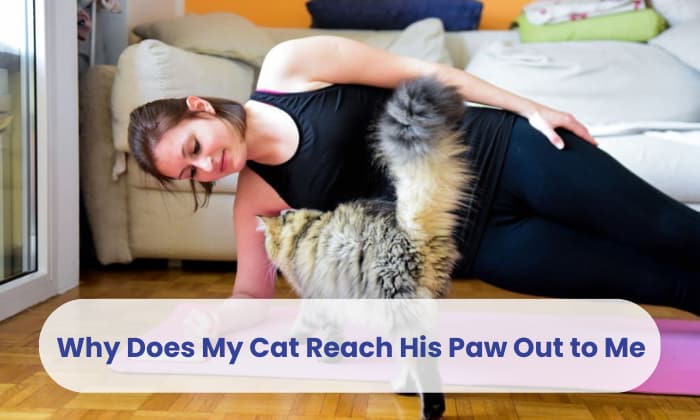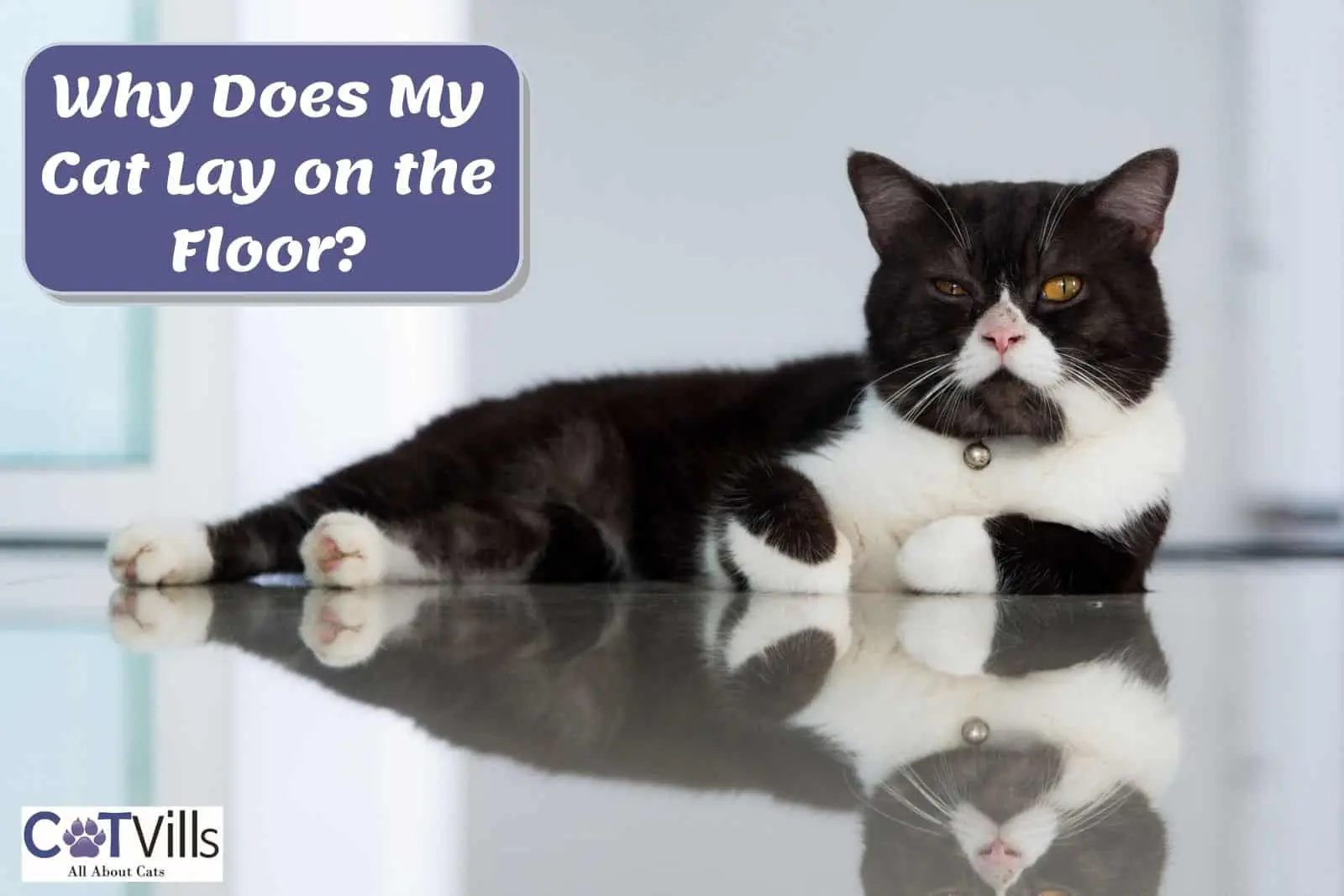Have you ever watched your cat meticulously paw at the floor, seemingly out of nowhere? It’s a behavior that can be both endearing and perplexing, leaving many cat owners wondering what exactly their feline companion is up to. This seemingly random movement can be more than just a playful whim; it often reveals a fascinating world of feline instincts, communication, and even emotional cues. Understanding these nuances can help deepen our bond with our cats, offering insight into their desires and anxieties.

Image: www.fveap.org
From seemingly aimless scratching to the intense kneading on blankets, the reasons behind a cat’s pawing behavior vary widely. This article delves into the multifaceted world of feline paws, separating the playful from the serious, and offering a guide to understanding the unspoken language of your cat’s footwork.
The Instinctual Roots of Pawing
At the heart of many feline behaviors, including pawing, lies a deep-seated instinctual drive. For our domesticated cats, this can be traced back to their wild ancestors and the survival techniques they developed.
1. The Marks of a Hunter: Scent and Territory
Cats, being naturally solitary hunters, have developed scent glands in their paws. These glands release pheromones that serve as a potent form of communication, allowing cats to mark their territory and convey information like their presence, mating availability, or potential threat levels. When a cat paws at the floor, it’s essentially leaving its scent signature, subtly declaring ownership of the space.
This behavior is especially evident in multi-cat households, where cats might leave their scent on preferred sleeping spots or frequently used pathways. While humans may not perceive these subtle olfactory signals, they play a crucial role in maintaining a cat’s sense of security and order within their environment.
2. The Preparation for a Pounce: Instinctive Pawing
Imagine a wild cat stalking its prey. Its paws, poised and ready to strike, are a vital tool in the hunt. This instinctual behavior manifests in our domestic cats, even in the absence of a real prey animal. Pawing at the floor, especially when paired with intense focus and a crouched posture, can essentially be a “practice pounce,” a release of pent-up hunting energy.
This playful expression of their predatory nature is often seen in kittens as they learn to stalk their toys and develop their hunting skills. Even adult cats, despite their comfortable lives, retain this innate drive, leading them to engage in playful pawing as a way to stay sharp and satisfied.

Image: catvills.com
Beyond Instinct: Explaining the Variations In Pawing
While instinctual drives form a significant part of a cat’s pawing behavior, there are nuances that go beyond basic survival. The intensity, context, and accompanying body language often offer clues about a cat’s emotional state or intentions.
1. The Comfort of Kneading: A Happy Habit
One of the most recognizable forms of cat pawing is the act of kneading, where cats rhythmically push their paws into a soft surface, often with a purring accompaniment. Though it may look like a cat simply stretching, kneading is deeply rooted in early kittenhood.
When kittens nurse, they use their paws to stimulate milk flow from their mother. This instinctual behavior remains ingrained in cats even after they become fully grown. Kneading is often a sign of contentment and relaxation, a way for cats to release tension and feel safe and secure. You might notice this behavior when your cat is curled up on a cozy blanket, a warm lap, or even your favorite t-shirt.
However, kneading can also be a sign of anxiety or frustration. If your cat is kneading excessively and with more force than usual, it may be a sign of discomfort or stress. Pay attention to other clues, like the cat’s body language and overall demeanor, to determine the root cause.
2. The Search for Something More: Pawing as a Communication Tool
Pawing at the floor can also be a subtle way for cats to communicate their needs or desires to their human companions. Although cats can’t speak our language, they have developed clever ways to convey their feelings. Here are some specific examples of pawing as communication:
-
Playtime: A gentle pawing at your hand or leg might indicate that your cat wants to play. These paw taps can be a playful invitation, a way for your cat to get your attention, and start a fun interaction. Pay attention to the intensity of the pawing; a gentle tap usually means “play,” while a more insistent pawing, coupled with loud meows, might signal a desperate desire for interaction.
-
Attention Seeking: Cat pawing can also be a direct way for your cat to get your attention. If you’re busy with something else, a quick pawing at your hand or leg might be their way of saying, “Hey, I need something.” This could be anything from a treat, a petting session, or an urgent need to be let outside.
-
Hunger pangs: If your cat is hungry and dinner is a little late, they may paw at their food bowl or even at you, as a way to remind you of their empty stomach.
-
The Need for the Litter Box: If a cat is suddenly pawing at the floor, especially in the vicinity of the litter box, it might indicate that the box needs cleaning or that they’re uncomfortable using it in its current state. Be sure to check the litter box to ensure it’s clean and that your cat doesn’t have any underlying medical conditions that could be causing this behavior.
Solving Pawing Dilemmas: A Guide for Understanding Your Cat
While pawing is often a harmless and even endearing activity, there are times when it can be a sign of a deeper issue. Here’s how to decipher if your cat’s pawing is a cause for concern:
1. The “Scratching Post vs. Floor” Conundrum
Many cats enjoy stretching out their claws on scratching posts, a crucial behavior for maintainig their nail health and leaving their scent mark. However, if your cat is consistently choosing to paw at the floor or furniture instead, it could indicate a few things:
-
Unattractive Scratching Post: Maybe your cat just isn’t a fan of the scratch post! Experiment with different materials, heights, and textures to find something that appeals to your cat’s senses.
-
Location, Location, Location: Think about where your scratch post is located. Make sure that it’s easily accessible and placed in a location where your cat spends a lot of time. Consider moving it to a different area if it’s not getting enough use.
-
Boredom and Under-Stimulation: If your cat is pawing at the floor excessively, it could be a sign of boredom or under-stimulation. Ensure that your cat has plenty of enrichment activities such as interactive toys, scratching posts, climbing structures, and dedicated playtime.
2. When Pawing Becomes Painful: Recognizing Medical Issues
While most pawing is harmless and simply a part of a cat’s natural behavior, there are times when excessive pawing can be a sign of a medical condition. Pay attention to these warning signs:
- Sudden Increase in Pawing: If your cat has a sudden increase in pawing frequency and intensity, it could be a sign of discomfort, pain, or an underlying medical issue.
- Unusual Licking or Chewing of Paws: Combined with pawing, this could indicate skin irritation, allergies, or a parasite problem.
- Swelling or Redness: Any swelling or redness around the paw pads might be a sign of infection or injury.
- Excessive Grooming: If your cat is licking or biting at its paws excessively, it might be a sign of anxiety, grooming disorders, or a flea infestation.
If you notice any of these concerning signs, it’s crucial to consult your veterinarian to rule out any medical conditions.
Why Does My Cat Paw At The Floor
Final Thoughts: Understanding and Nurturing your Cat’s Needs
By understanding the many reasons behind a cat’s pawing behavior, we can gain a deeper appreciation for their complex nature. Whether it’s a playful instinct, a need for comfort, or a way to communicate, these subtle movements offer a window into their world. By providing them with enrichment, attention, and a safe and fulfilling environment, we can encourage them to express their pawing instincts in healthy and fulfilling ways.
Don’t just see the pawing; see it as an opportunity to understand your cat’s needs and cater to their unique personality. After all, each gentle paw tap is a little reminder that these curious creatures are brimming with feelings, instincts, and a unique language all their own. So, the next time your cat paws at the floor, take a moment to observe, understand, and connect with the captivating world of your feline companion.






